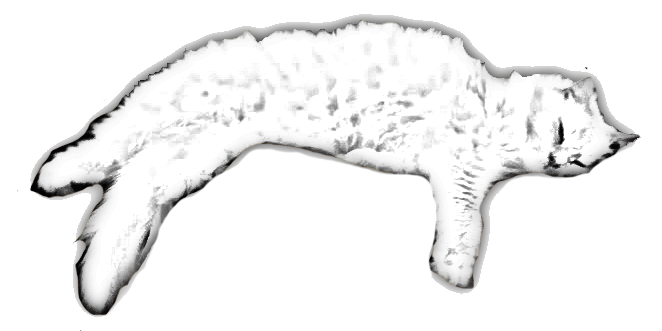Did you know that indoor cats can sometimes lack the exercise they need to stay healthy and energetic?
Well, we have good news for you! In this article, we'll share with you the top low-energy cat breeds that can help boost your indoor cat's energy levels.
These breeds have a naturally calm and relaxed demeanor, making them perfect companions for a more laid-back lifestyle.
So, let's dive in and discover the best low-energy breeds for your indoor feline friend!
Characteristics of Low-Energy Indoor Cat Breeds
What are the characteristics of low-energy indoor cat breeds?
When it comes to low-energy indoor cats, there are a few key characteristics to consider. These breeds are known for their calm and relaxed nature, preferring lounging and napping over high-energy activities. They're typically less active and require less exercise compared to their more energetic counterparts.
However, it's important to note that low-energy doesn't mean unhealthy. Common health issues in low-energy cat breeds can include obesity and joint problems, so it's crucial to monitor their weight and provide appropriate nutrition.
Training techniques for low-energy indoor cats should focus on mental stimulation, such as puzzle toys and interactive play. By providing a stimulating environment and proper care, low-energy indoor cat breeds can lead happy and content lives.
Top 5 Low-Energy Cat Breeds for Indoor Living
Let's explore the top 5 low-energy cat breeds for indoor living. These breeds are perfect for apartment living due to their low activity levels and calm demeanor. Here are the top 5 low-energy cat breeds:
- British Shorthair: Known for their laid-back attitude and affectionate nature, British Shorthairs are content to spend their days lounging around the house.
- Ragdoll: Ragdolls are gentle and easygoing cats that love to be held and cuddled. They aren't overly active and are happy to relax indoors.
- Persian: Persians are known for their luxurious coats and calm temperament. They prefer a calm and quiet environment, making them great for apartment living.
- Maine Coon: Despite their large size, Maine Coons are surprisingly low-energy cats. They enjoy a relaxed lifestyle and aren't overly demanding.
- Scottish Fold: Scottish Folds have a sweet and gentle nature, making them great companions for indoor living. They're content to spend their days lounging and observing their surroundings.
To create a stimulating indoor environment for low-energy cat breeds, provide plenty of toys, scratching posts, and cozy hiding spots. Interactive toys and puzzle feeders can also help keep them mentally stimulated.
How Low-Energy Breeds Can Benefit Your Indoor Cat
Low-energy breeds provide numerous benefits for our indoor cats.
One important benefit is the emphasis on mental stimulation for these low-energy indoor cats. While they may not require as much physical activity as other breeds, mental stimulation is crucial for their overall well-being. Engaging their minds with puzzle toys, interactive games, and even training sessions can help keep them mentally sharp and prevent boredom.
Additionally, creating a cat-friendly environment is essential for low-energy breeds. Providing cozy hiding spots, vertical spaces like cat trees or shelves, and plenty of scratching posts can make their indoor environment more stimulating and enriching.
Choosing the Right Low-Energy Breed for Your Indoor Cat
We can select the ideal low-energy breed for our indoor cat by considering their temperament and activity level.
When it comes to low-energy breed selection, here are some tips to keep in mind:
- Temperament:
- Look for breeds known for their calm and relaxed nature, such as the British Shorthair or the Ragdoll.
- Consider breeds that are less prone to anxiety or stress, like the Persian or the Maine Coon.
- Activity Level:
- Opt for breeds that are naturally less active, such as the British Shorthair or the Scottish Fold.
- Choose breeds that are content with minimal exercise and play, like the Russian Blue or the Exotic Shorthair.
While low-energy breeds require less physical activity, it's important to keep indoor cats mentally stimulated. Alternative ways to keep them active can include puzzle toys, interactive play sessions, and providing vertical spaces for climbing and exploring.
Tips for Keeping Low-Energy Breeds Active Indoors
To keep low-energy breeds active indoors, we can engage them in regular interactive play sessions using toys and puzzles. Creative play ideas for low energy indoor cats include using interactive toys that require them to chase, pounce, and bat at objects. Toys like laser pointers, feather wands, and treat-dispensing puzzles can provide mental and physical stimulation.
Another way to create a stimulating indoor environment for low-energy cat breeds is by setting up a cat tree or shelves for climbing and exploring. Adding scratching posts, hiding spots, and window perches can also keep them entertained.
It's essential to rotate and introduce new toys regularly to prevent boredom. Additionally, dedicating time each day to play with them can help maintain their physical and mental well-being.
Conclusion
In conclusion, just as a gentle breeze can rouse the sleeping ocean, low-energy cat breeds have the power to awaken the dormant energy within our indoor feline companions.
With their calm and relaxed nature, these breeds bring a sense of tranquility to our homes while still providing companionship and love.
By understanding the unique characteristics of low-energy breeds and providing them with appropriate stimulation, we can ensure that our indoor cats lead fulfilling and vibrant lives, like a hidden gem shining brightly in the depths of the sea.




0 Comments